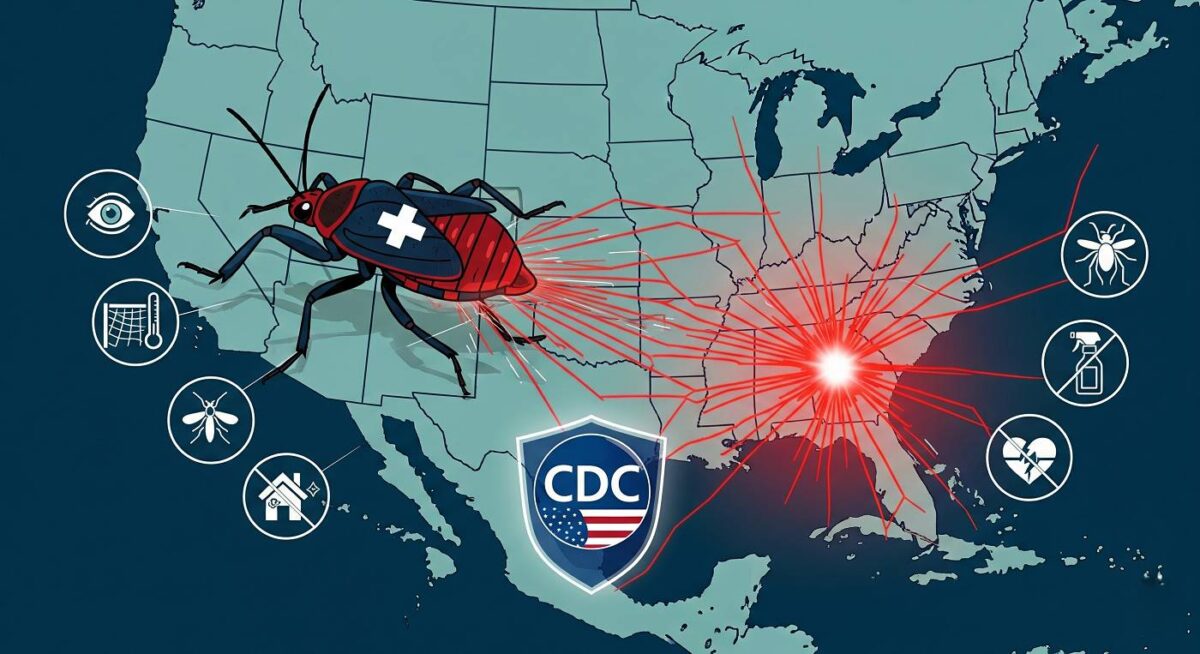CDC Declares Chagas Disease Endemic in U.S. South
Health authorities are raising alarms as Chagas Disease spread becomes firmly established across the southern United States. The Centers for Disease Control and Prevention (CDC) now considers the parasitic infection—transmitted by triatomine or “kissing bugs”—as endemic, signaling sustained local transmission and growing public health concerns.
Background: The Silent Parasite on the Move
Chagas disease, caused by the protozoan parasite Trypanosoma cruzi, is typically carried by kissing bugs that bite humans—often around the face—and deposit infected feces near the wound. If scratched into the skin, the parasite can enter the bloodstream.
The U.S. now hosts infected kissing bugs in 32 states, with local human cases reported in eight, including Texas, Arizona, and Louisiana. This marks a significant shift from Chagas being viewed as a disease of Latin America alone.
Symptoms and Risk Factors: When the Bite Goes Beyond a Scratch
Chagas disease often begins quietly. The acute phase may be asymptomatic or present mild flu-like signs—fever, fatigue, swollen eyelids. Over time, without treatment, chronic complications can emerge, including heart failure, arrhythmias, and gastrointestinal issues such as megacolon or megaesophagus. Some losses may occur decades after infection.
Millions in the U.S. could be unaware carriers—estimates suggest over 300,000 infections nationwide, with 45,000 in Los Angeles County alone.
Regional Spread and Expert Insight
The disease has taken root in the southern U.S., with autocthonous (locally acquired) cases noted in states from Texas to California. Pets and wildlife—including dogs, raccoons, and armadillos—serve as reservoirs, creating a persistent ecological cycle of transmission.
Experts warn that labeling the U.S. non-endemic has hindered detection and awareness among both physicians and the public. Recognition as endemic could fuel improved surveillance, screening, and treatment efforts.
What It Means for Residents and Visitors
- Awareness is vital: Individuals in rural or southern regions should watch for symptoms, especially if working or living near wildlife habitats.
- Prevention matters: The CDC recommends sealing homes, using insecticides, wearing protective clothing, and managing pets effectively with flea/tick treatments.
- Early treatment is critical: Two FDA-approved antiparasitic drugs—benznidazole and nifurtimox—are effective during the acute phase. New treatments are under investigation.
FAQs
Chagas disease is caused by the parasite Trypanosoma cruzi, spread by kissing bugs that bite and leave infected feces. The CDC now deems it endemic, with kissing bugs present in 32 states and local human cases in eight.
Acute symptoms may be mild or flu-like—fever, fatigue, eyelid swelling. Without early treatment, chronic Chagas can lead to serious heart and digestive complications, sometimes decades later.
Prevention includes sealing cracks, using insecticides, wearing long clothing, and treating pets with flea/tick medication. Benznidazole or nifurtimox can treat early infections.
The Chagas disease spread across the U.S. highlights a growing health challenge with significant implications. Better awareness, surveillance, and early treatment could mitigate long-term impacts—especially in vulnerable regions.
Sources:
Washington Post
People.com
NYPost









